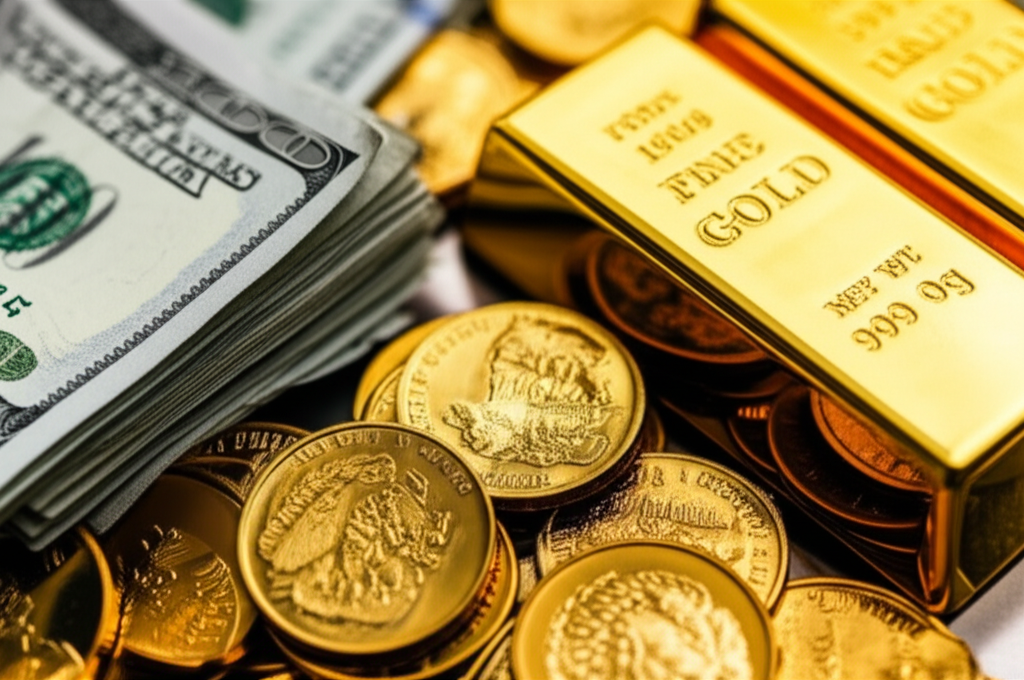Trump’s Monetary Reset: Is a Gold-Backed Dollar on the Horizon?
The notion of a gold-backed U.S. dollar, once a cornerstone of global finance, largely faded into economic history after the collapse of the Bretton Woods system in 1971. Yet, whispers of its potential return have resurfaced, particularly as former President Donald Trump explores a possible second term. The intriguing question of whether a “monetary reset” involving gold is truly on the horizon for the world’s reserve currency is sparking debate among economists, policymakers, and a younger generation increasingly keen on understanding the mechanics of global finance. This speculative shift, if pursued, would represent a seismic change to the architecture of modern monetary policy, with far-reaching implications for stability, growth, and the very nature of money.
The concept of a gold standard ties the value of a currency directly to a specific quantity of gold. Historically, this limited the ability of governments to print money freely, theoretically ensuring price stability and preventing runaway inflation. Proponents of such a system, including some advisors close to Donald Trump, argue that a return to gold would impose much-needed fiscal discipline on Washington. They contend that it would curb excessive government spending, reduce national debt by constraining the money supply, and restore trust in the dollar’s purchasing power, which they believe has eroded under the current fiat money system. The appeal often lies in a perceived return to a more “sound” money principle, where the value of currency is not solely dictated by central bank decisions but by a tangible, finite commodity. This argument resonates with those critical of contemporary monetary policies, such as quantitative easing and low interest rates, which are often blamed for inflationary pressures and asset bubbles.
However, the vast majority of mainstream economists and central bankers argue vehemently against a return to a gold standard, citing its profound limitations and historical drawbacks. The primary concern is the loss of monetary policy flexibility. In a gold-backed system, a central bank like the Federal Reserve would be unable to actively manage the economy through interest rate adjustments or by expanding the money supply during crises. This means that during recessions, the Fed would be powerless to stimulate growth, potentially exacerbating downturns and leading to prolonged periods of high unemployment. The supply of gold is inherently limited, meaning that economic growth would be constrained by the rate at which new gold is discovered and mined, not by the economy’s productive capacity. This could lead to deflationary pressures, where prices fall, discouraging investment and spending. Furthermore, gold itself is a commodity subject to price fluctuations, making a gold-backed currency vulnerable to market volatility that could destabilize the entire economy. Managing a global financial system based on gold would also present immense practical challenges, requiring enormous gold reserves and complex international agreements to ensure convertibility and prevent speculative attacks. The world abandoned the gold standard precisely because it proved too rigid and destabilizing during periods of economic shock, such as the Great Depression.
While the idea of a gold-backed dollar offers a simple, appealing narrative of stability and fiscal prudence, its real-world implementation in the 21st century would face colossal hurdles. The modern global economy relies on flexible exchange rates and independent central banks capable of responding dynamically to economic conditions. Any move towards a gold standard would risk triggering global financial instability, disrupt international trade, and fundamentally alter the geopolitical balance of power. For young adults navigating a complex economic landscape, understanding these potential shifts is crucial. While the discussion around a “monetary reset” highlights ongoing debates about currency value and economic stability, a full return to a gold-backed dollar remains a highly improbable and economically contentious proposition, seen by most as a theoretical exercise rather than a viable policy solution for the challenges of today’s interconnected global economy. The question is less about *if* such a monumental shift is feasible, and more about *why* it continues to capture public imagination in an era of unprecedented economic fluidity.





